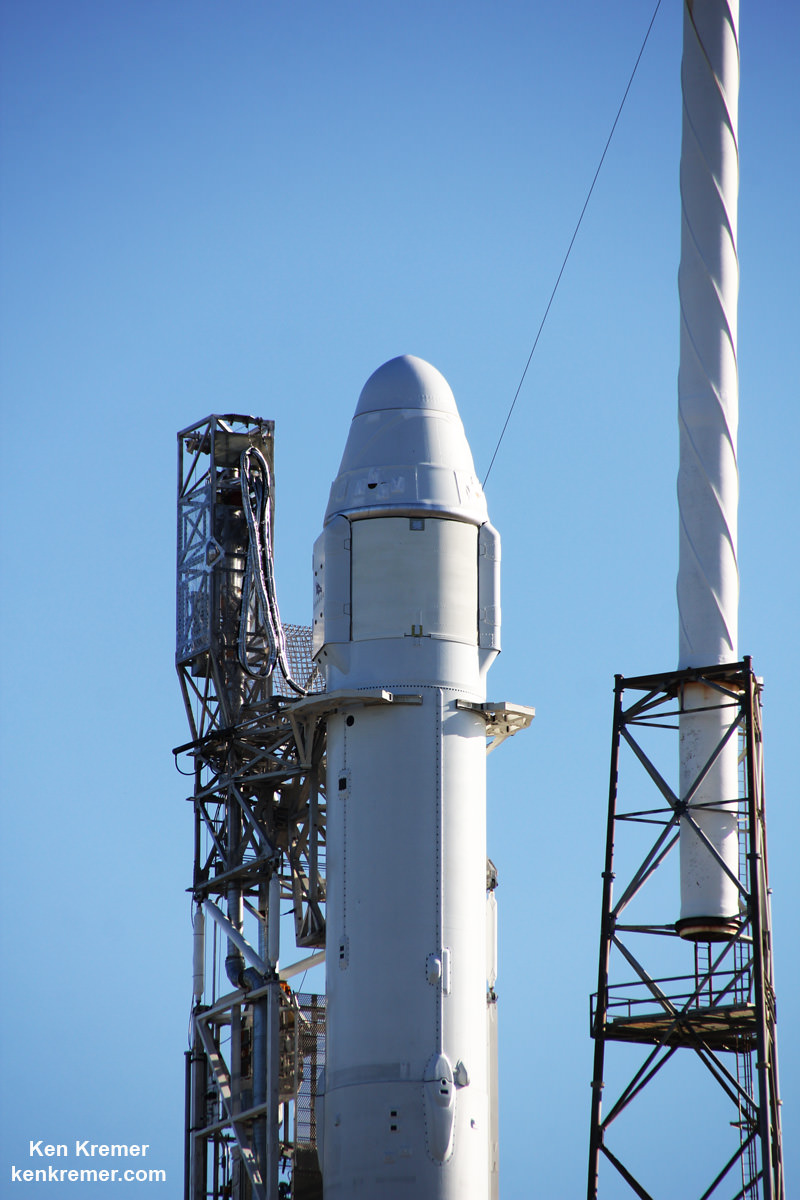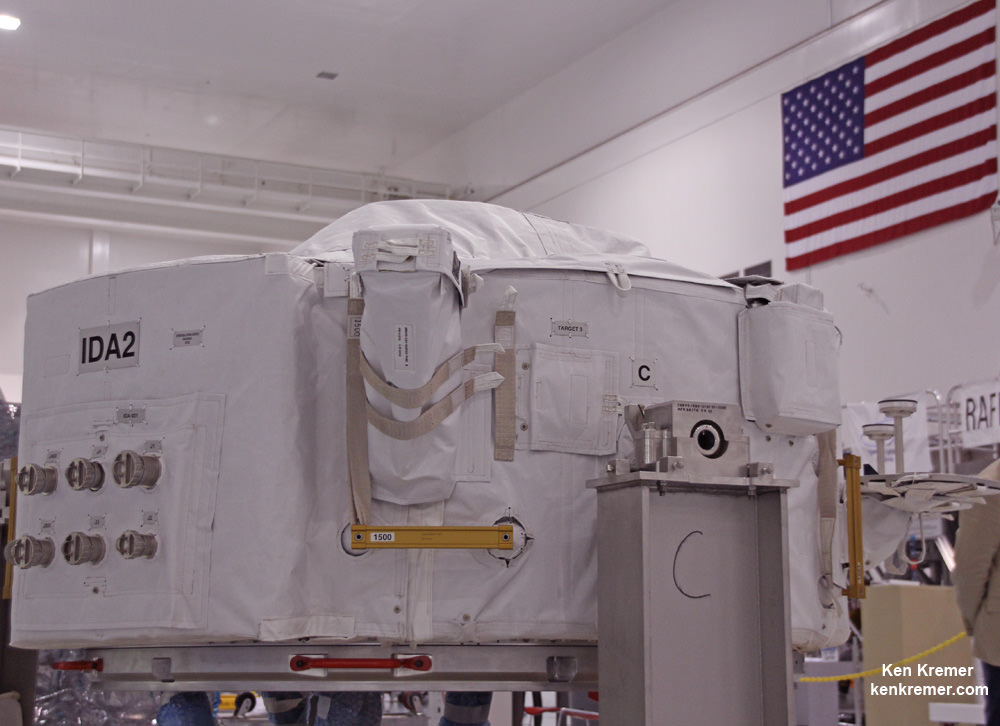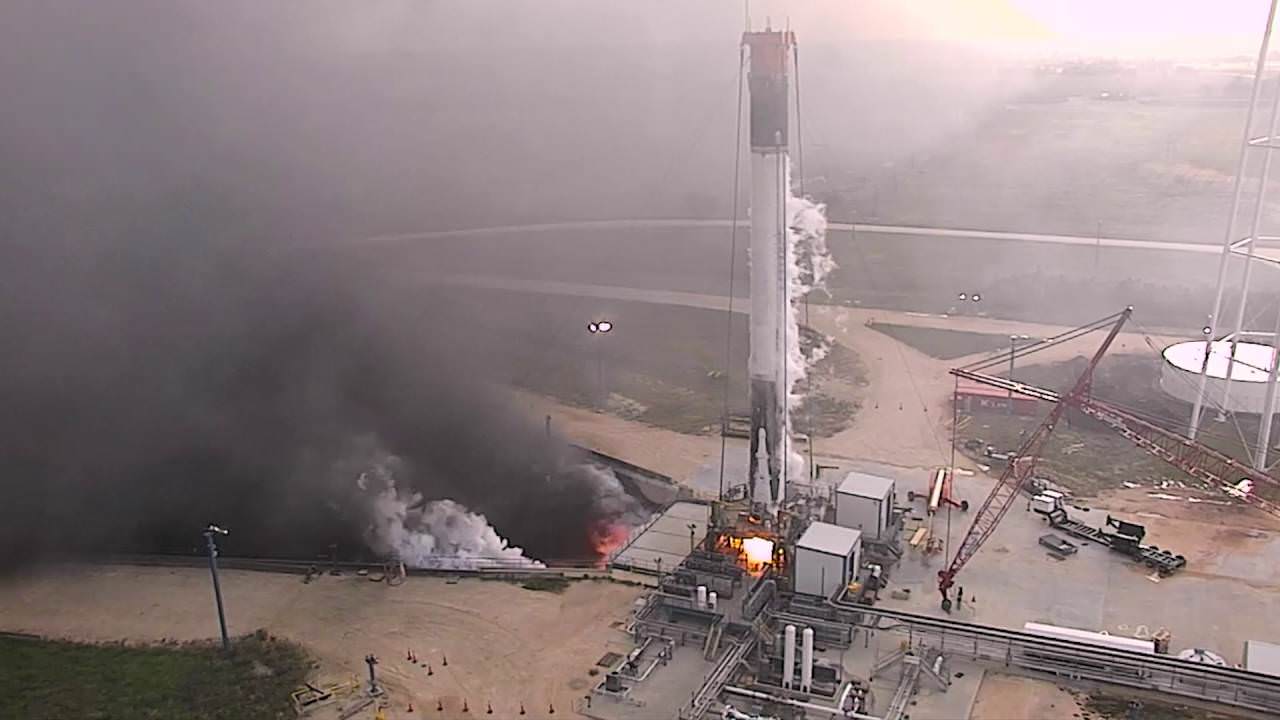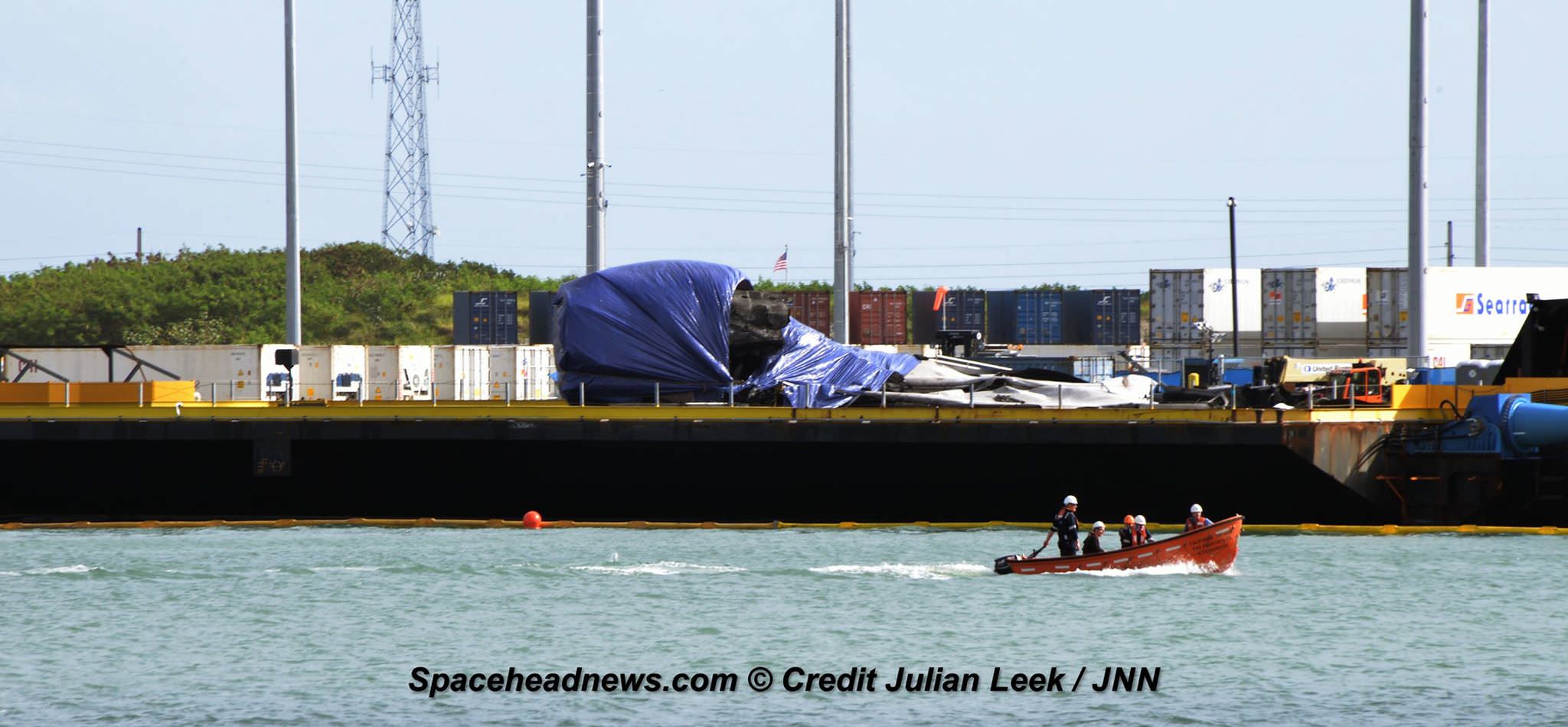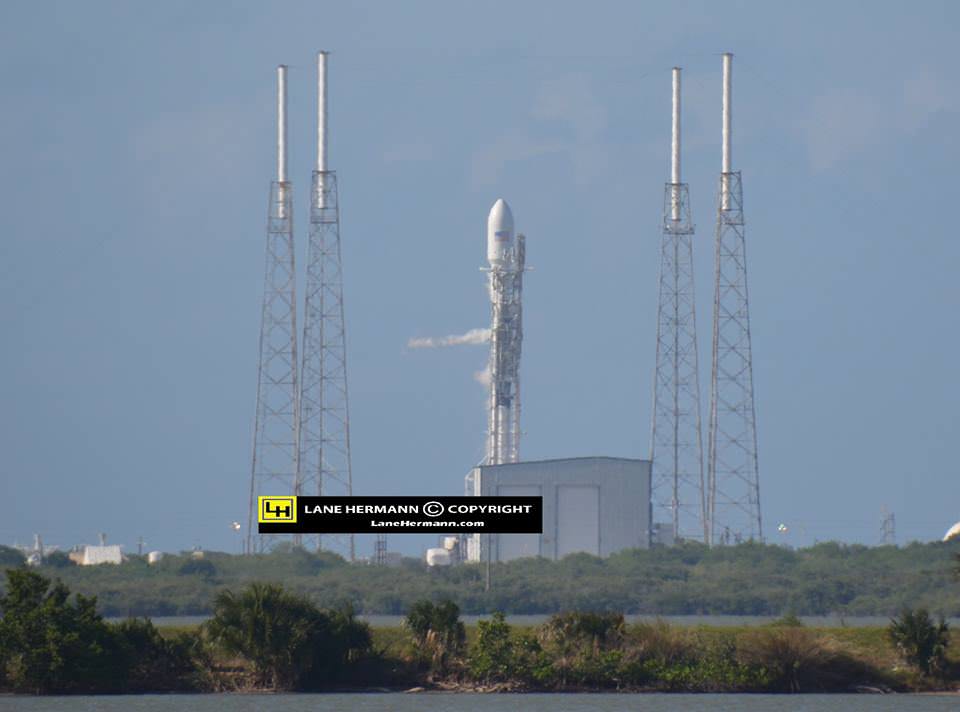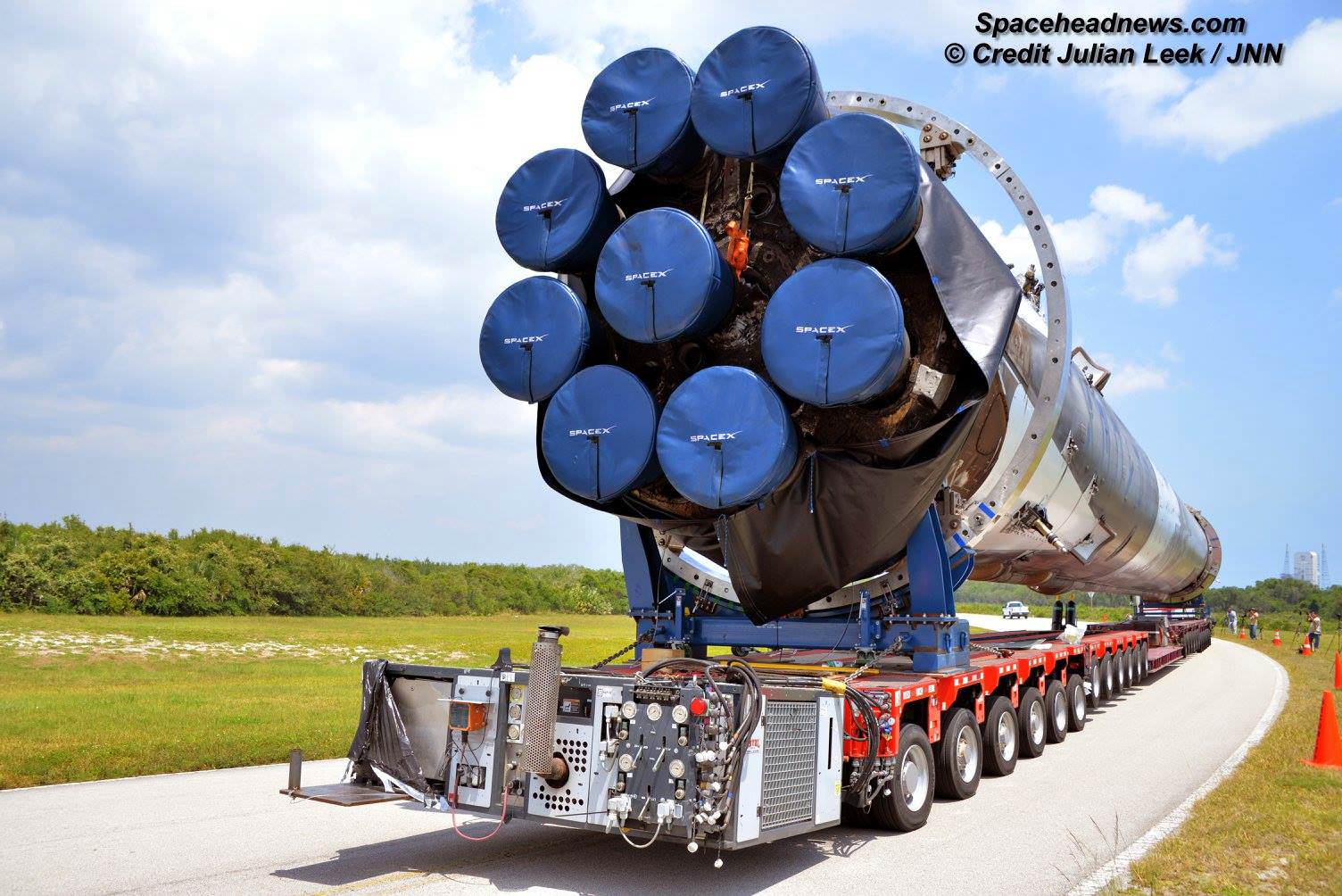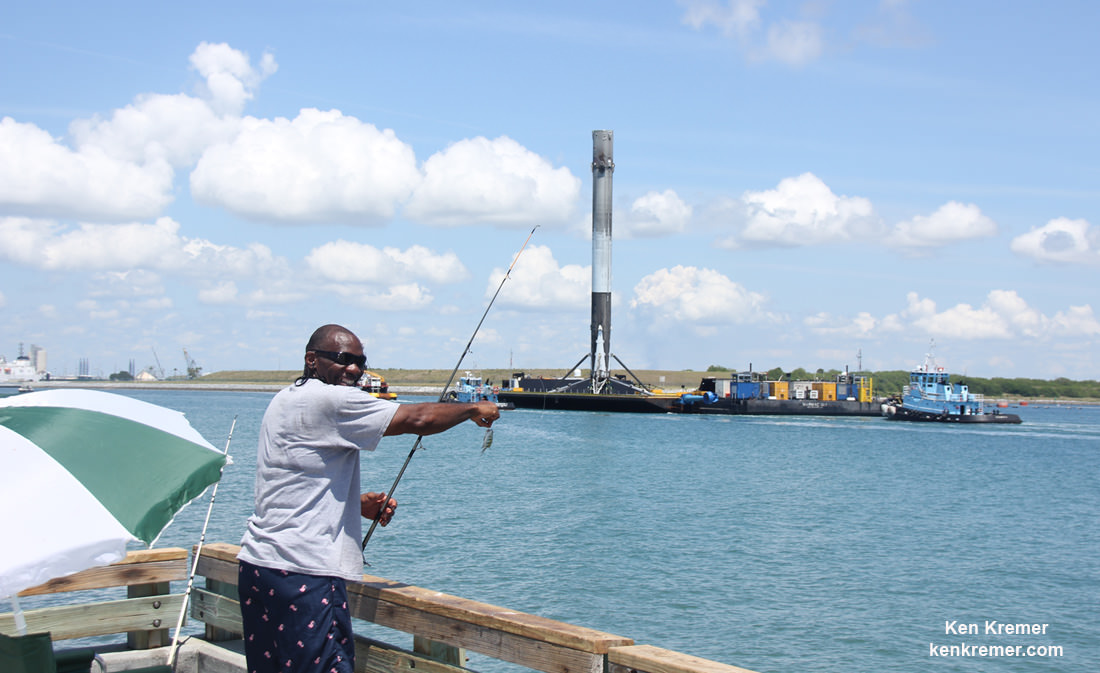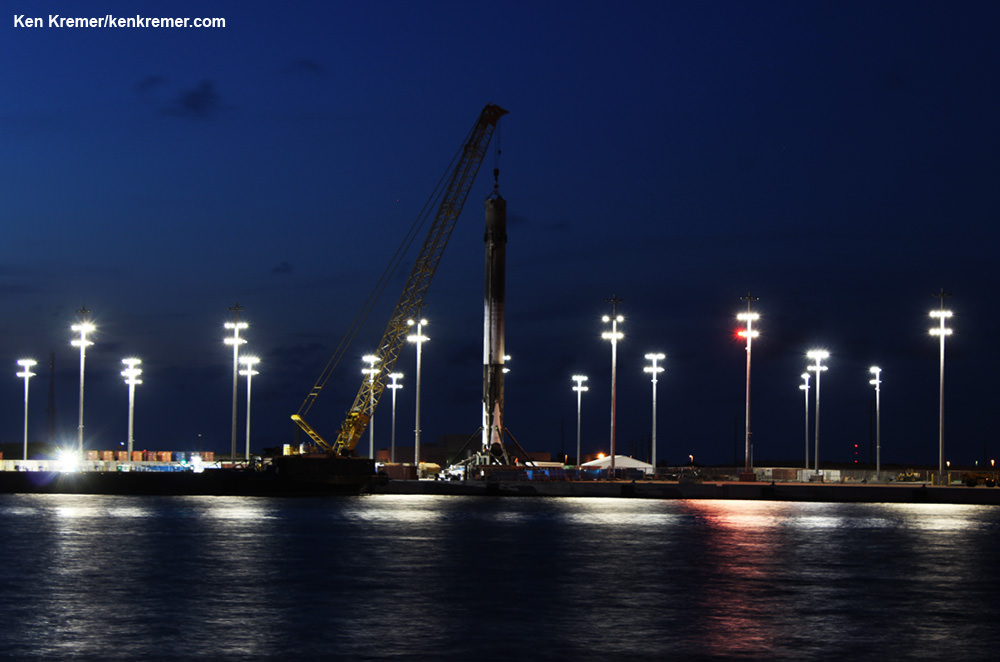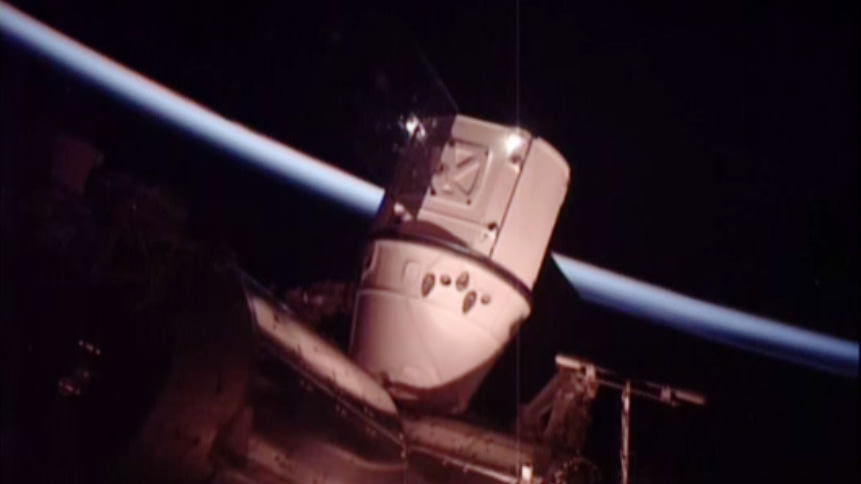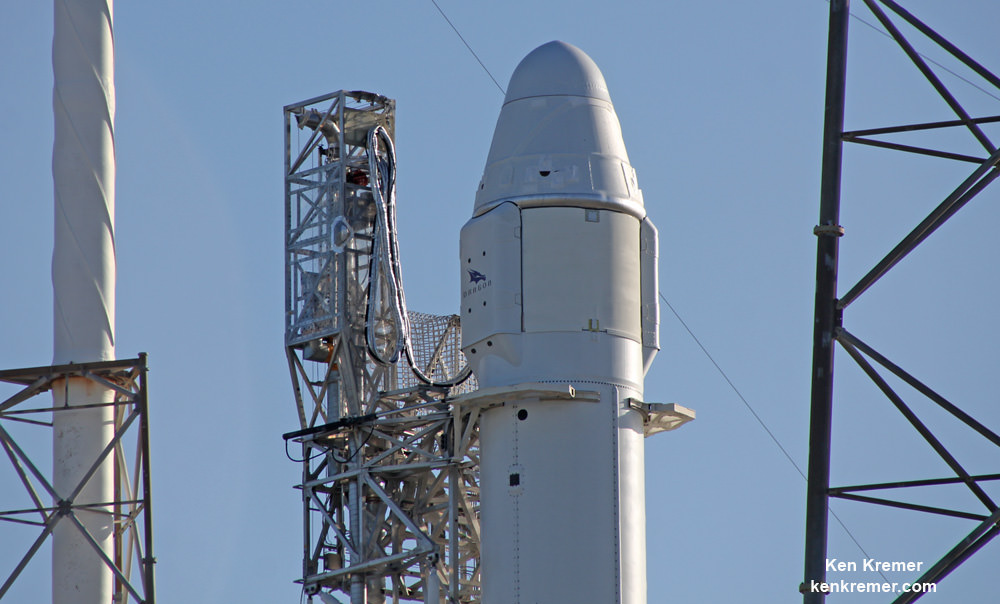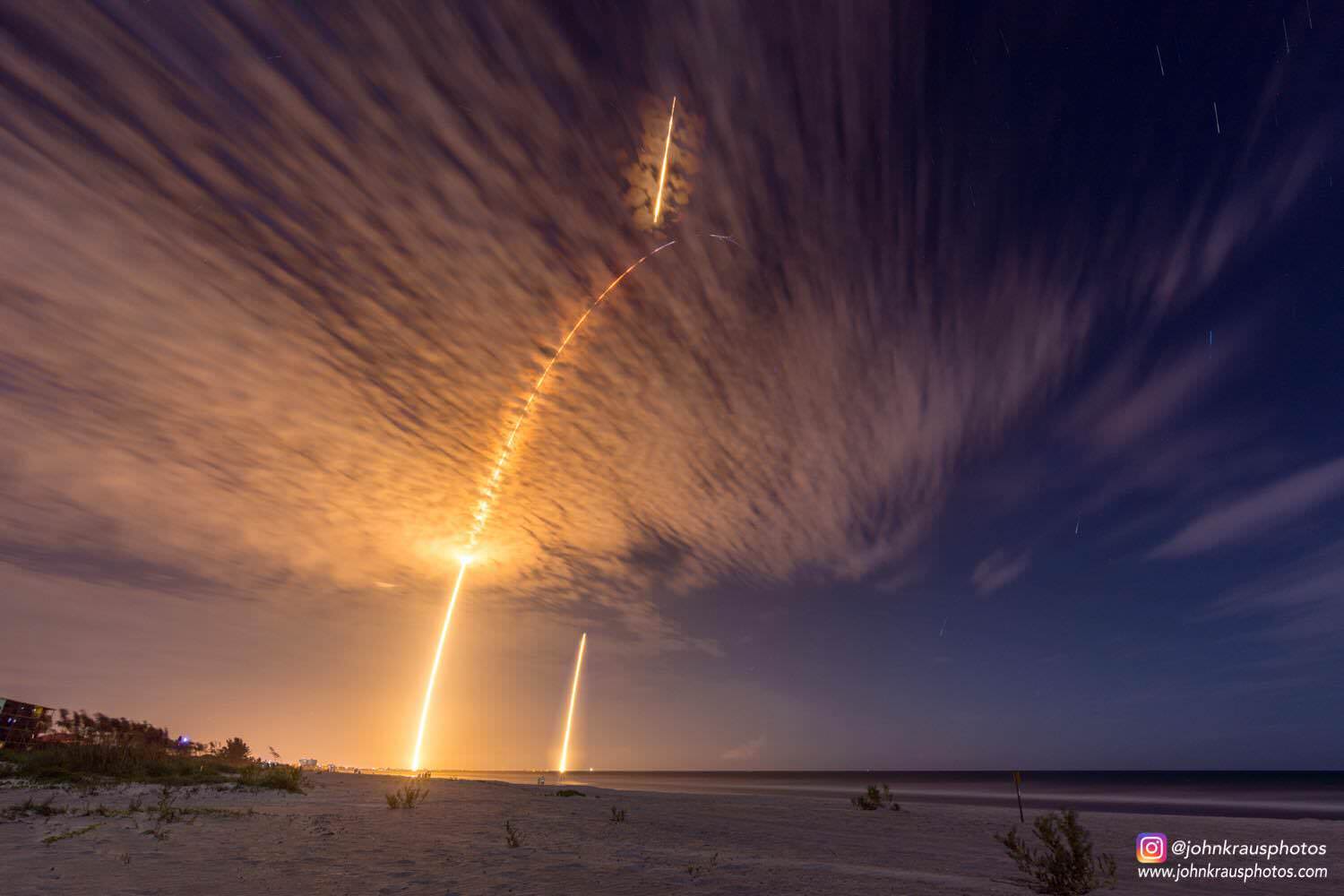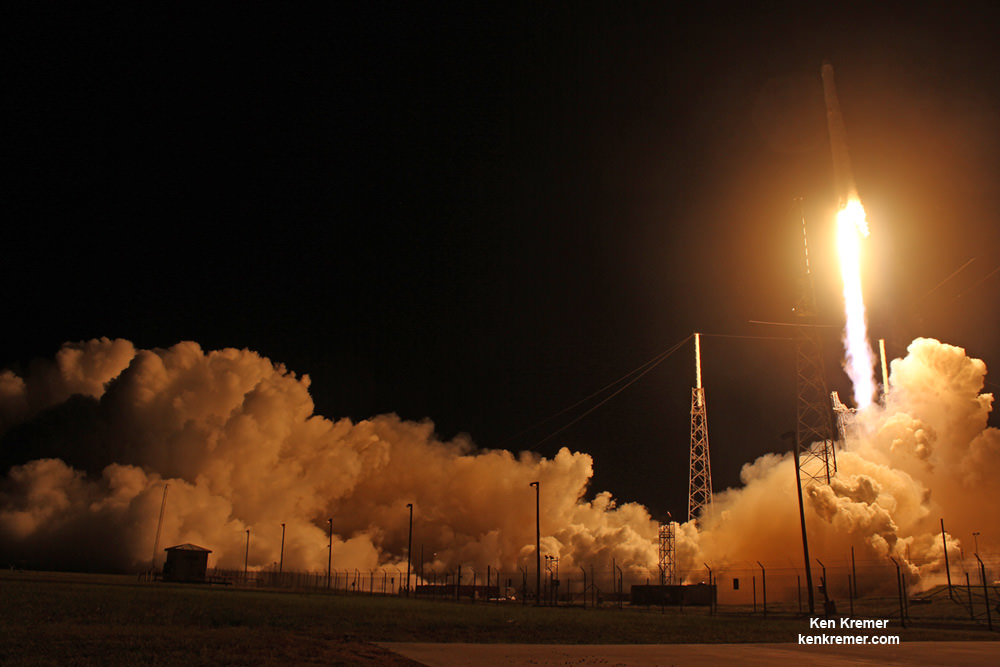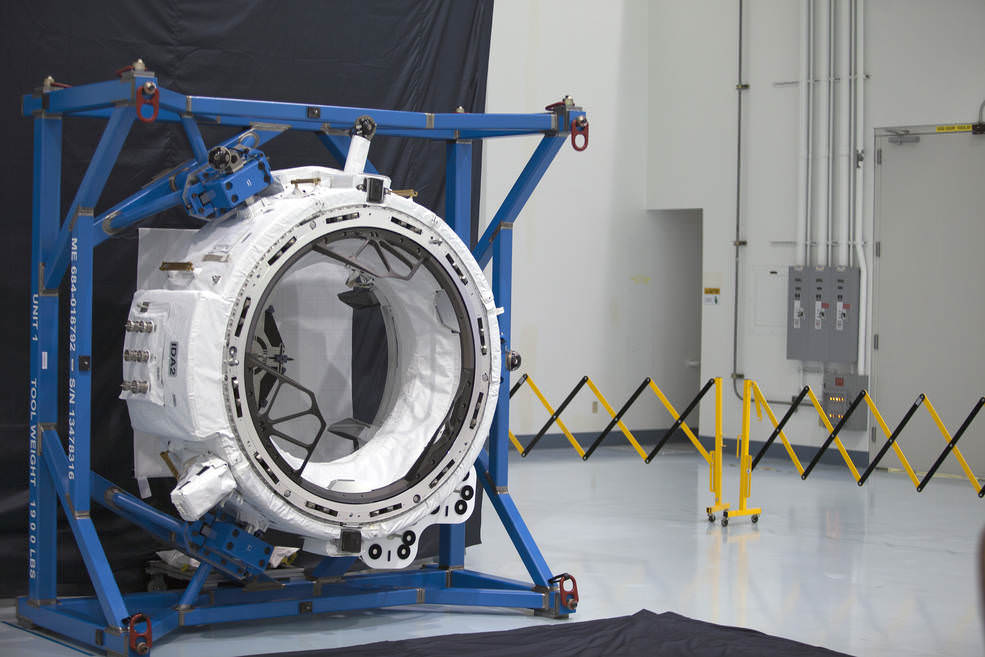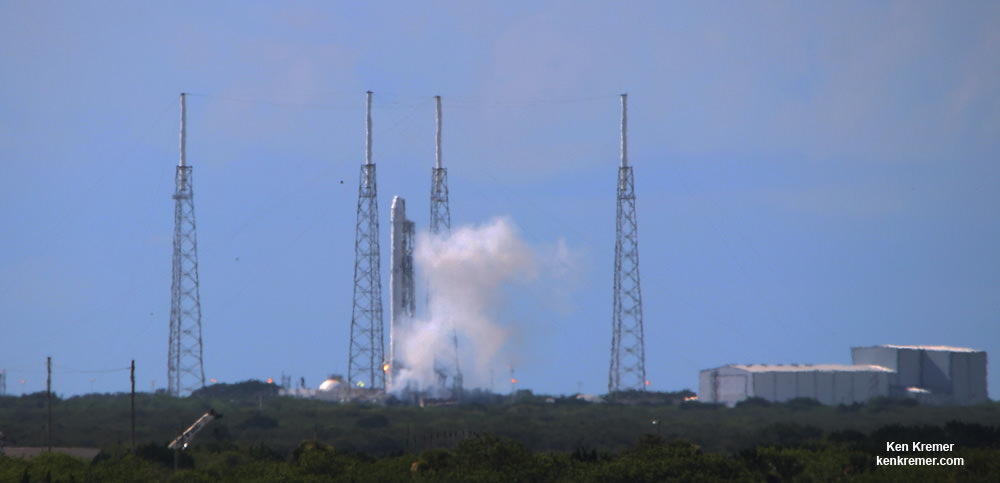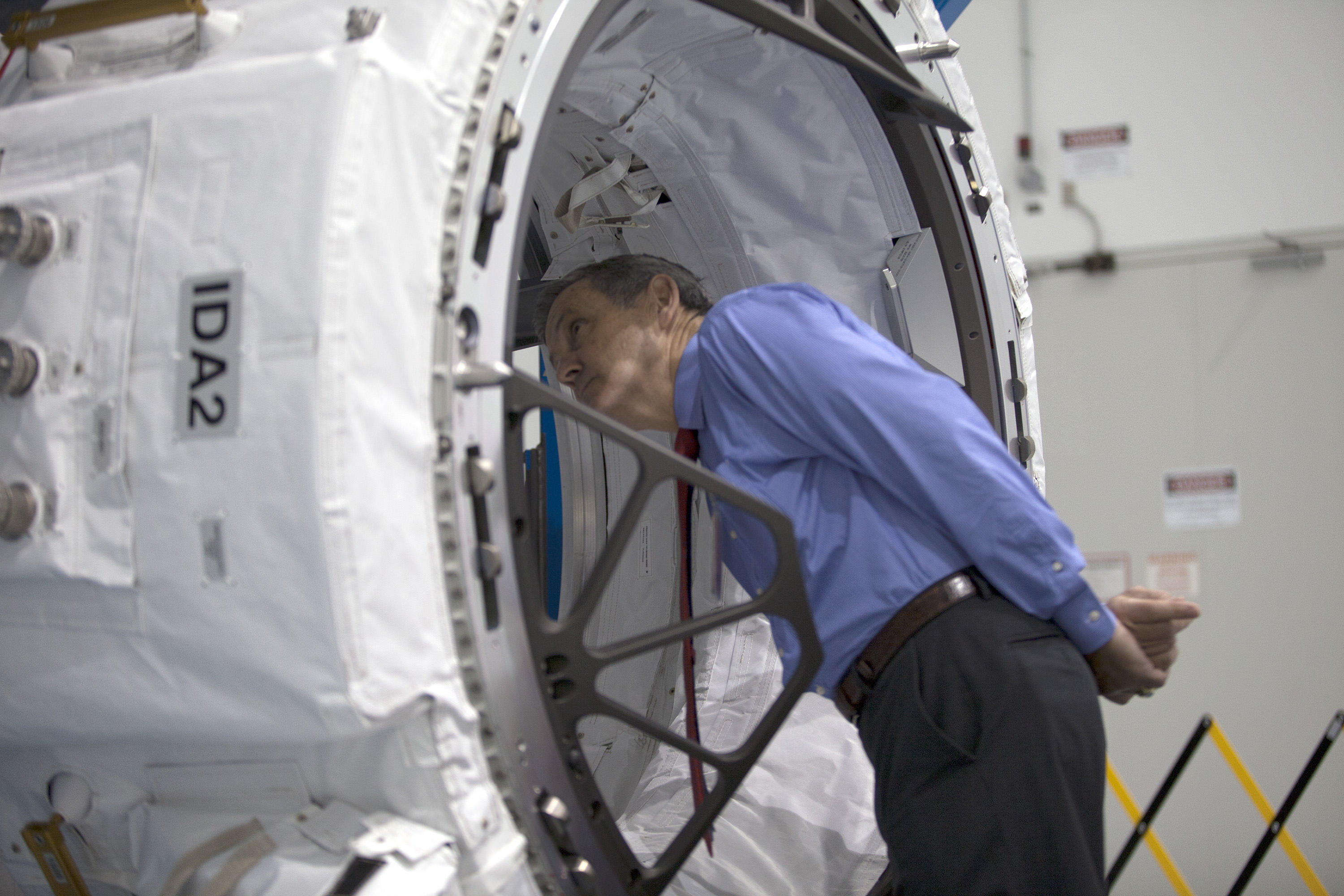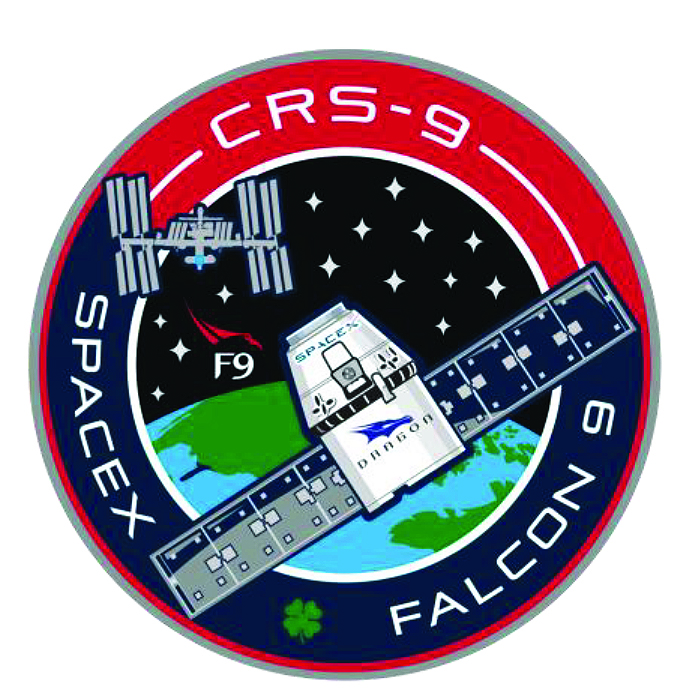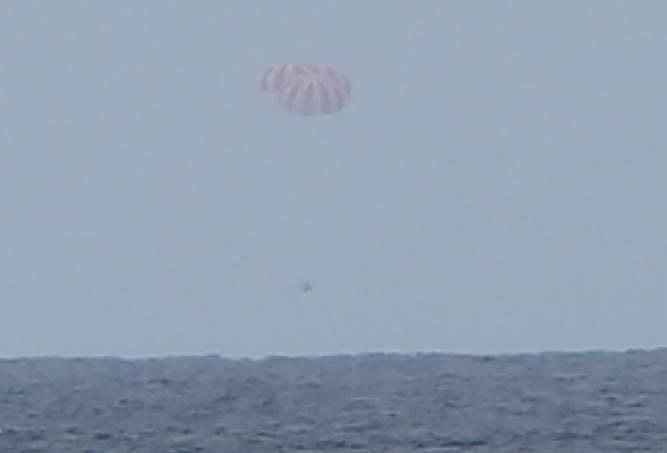
A SpaceX commercial Dragon cargo ship returned to Earth today, Friday, Aug. 26, 2016, by splashing down safely in the Pacific Ocean – thus concluding more than a month long stay at the International Space Station (ISS). The vessel was jam packed with some 1.5 tons of NASA cargo and critical science samples for eagerly waiting researchers.
The parachute assisted splashdown of the Dragon CRS-9 cargo freighter took place at 11:47 a.m. EDT today in the Pacific Ocean – located some 326 miles (520 kilometers) southwest of Baja California.
Dragon departed after spending more than five weeks berthed at the ISS.
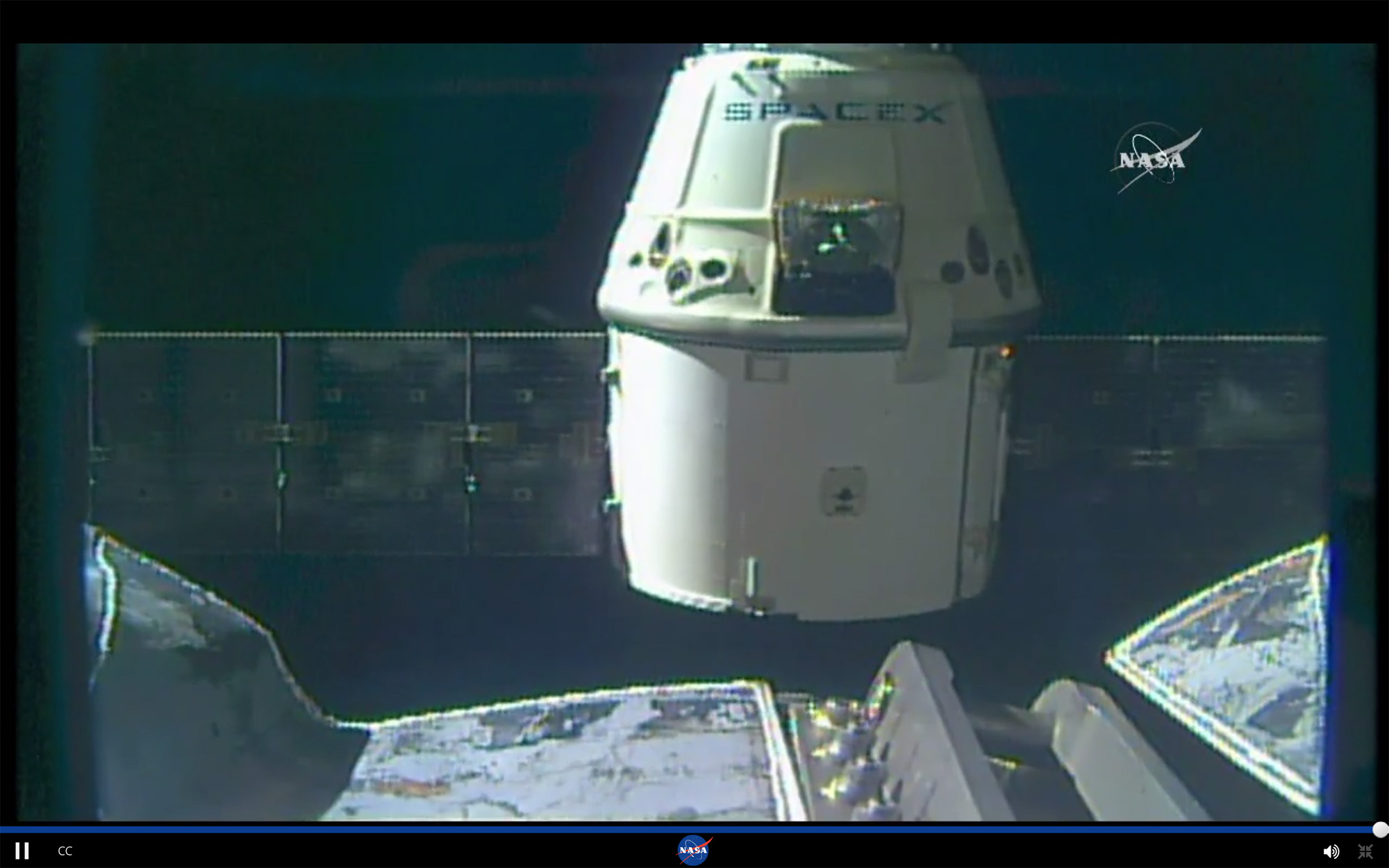
It was loaded with more than 3,000 pounds of NASA cargo and critical research samples and technology demonstration samples accumulated by the rotating six person crews of astronauts and cosmonauts living and working aboard the orbiting research laboratory.
This station based research will contribute towards NASA’s strategic plans to send astronauts on a ‘Journey to Mars’ by the 2030s.
It arrived at the station on July 20 ferrying over 2.5 tons of priceless research equipment, gear, spare parts and supplies, food, water and clothing for the station’s resident astronauts and cosmonauts as well as the first of two international docking adapters (IDAs) in its unpressurized cargo hold known as the “trunk.”
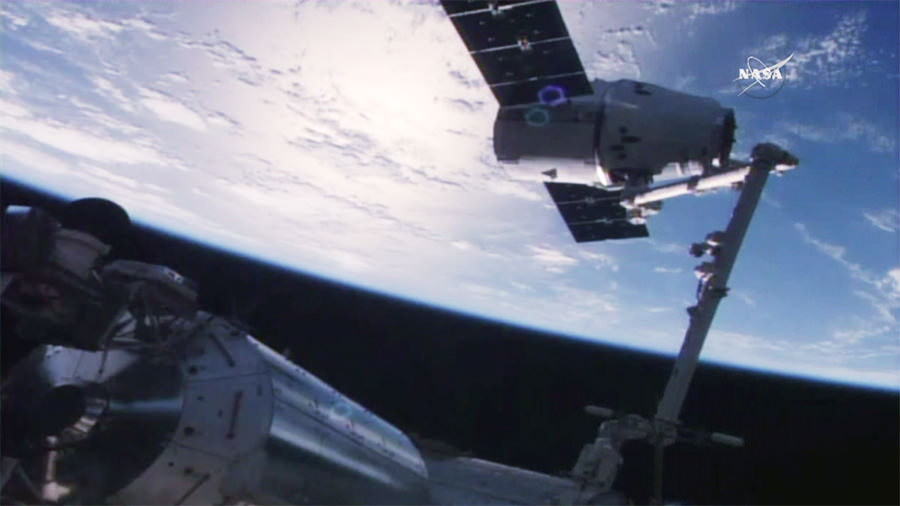
Dragon was launched on July 18 during a mesmerizing post midnight, back-to-back liftoff and landing of the SpaceX Falcon 9 rocket in its upgraded, full thrust version.

The SpaceX Falcon 9 blasted off at 12:45 a.m. EDT July 18, from Space Launch Complex 40 at Cape Canaveral Air Force Station in Florida and successfully delivered the Dragon CRS-9 resupply ship to its preliminary orbit about 10 minutes later.
SpaceX also successfully executed a spellbinding ground landing of the Falcon 9 first stage back at Cape Canaveral Air Force Station’s Landing Zone 1, located a few miles south of launch pad 40.
The dramatic ground landing of the 156 foot tall Falcon 9 first stage at LZ -1 took place about 9 minutes after liftoff. It marked only the second time a spent, orbit class booster has touched down intact and upright on land.
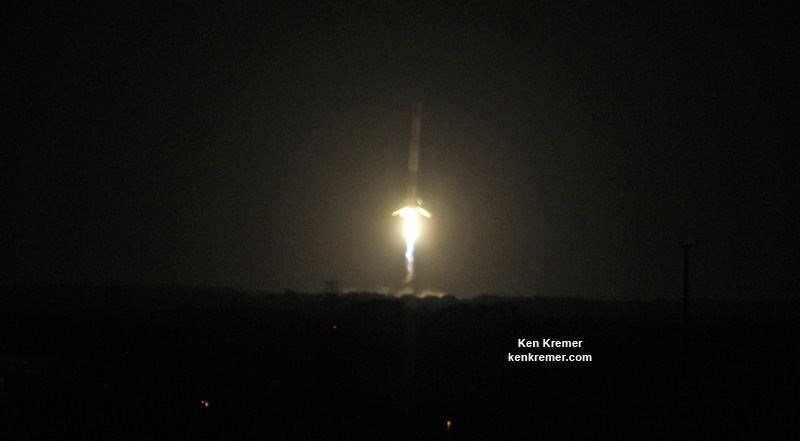
The stage was set for today’s return to Earth when ground controllers robotically detached Dragon from the Earth-facing port of the Harmony module early this morning using the station’s 57.7-foot (17.6-meter) long Canadian-built robotic arm.
Expedition 48 Flight Engineers Kate Rubins of NASA and Takuya Onishi of the Japan Aerospace Exploration Agency (JAXA) then used Canadarm 2 to release Dragon from the grappling snares at about 6:10 a.m. EDT (1011 GMT) this morning.
“Houston, station, on Space to Ground Two, Dragon depart successfully commanded,” radioed Rubins.
The ISS was soaring some 250 miles over the Timor Sea, north of Australia.
“Congratulations to the entire team on the successful release of the Dragon. And thank you very much for bringing all the science, and all the important payloads, and all the important cargo to the station,” Onishi said. “We feel really sad to see it go because we had a great time and enjoyed working on all the science that the Dragon brought to us.”
Dragon then backed away and moved to a safe distance from the station via a trio of burns using its Draco maneuvering thrusters.
The de-orbit burn was conducted at 10:56 a.m. EDT (1456 GMT) to drop Dragon out of orbit and start the descent back to Earth.
SpaceX contracted recovery crews hauled Dragon aboard the recovery ship and are transporting it to a port near Los Angeles, where some time critical cargo items and research samples will be removed and returned to NASA for immediate processing.
SpaceX plans to move Dragon back to the firms test facility in McGregor, Texas, for further processing and to remove the remaining cargo cache.
Among the wealth of over 3900 pounds (1790 kg) of research investigations loaded on board Dragon was an off the shelf instrument designed to perform the first-ever DNA sequencing in space and the first international docking adapter (IDA) that is absolutely essential for docking of the SpaceX and Boeing built human spaceflight taxis that will ferry our astronauts to the International Space Station (ISS) in some 18 months.
During a spacewalk last week on Aug. 19, the initial docking adapter known as International Docking Adapter-2 (IDA-2) was installed Expedition 48 Commander Jeff Williams and Flight Engineer Kate Rubins of NASA.
Other science experiments on board included OsteoOmics to test if magnetic levitation can accurately simulate microgravity to study different types of bone cells and contribute to treatments for diseases like osteoporosis, a Phase Change Heat Exchanger to test temperature control technology in space, the Heart Cells experiments that will culture heart cells on the station to study how microgravity changes the human heart, new and more efficient three-dimensional solar cells, and new marine vessel tracking hardware known as the Automatic Identification System (AIS) that will aid in locating and identifying commercial ships across the globe.
The ring shaped IDA-2 unit was stowed in the Dragon’s unpressurized truck section. It weighs 1029 lbs (467 kg), measures about 42 inches tall and sports an inside diameter of 63 inches in diameter – so astronauts and cargo can easily float through. The outer diameter measures about 94 inches.
“Outfitted with a host of sensors and systems, the adapter is built so spacecraft systems can automatically perform all the steps of rendezvous and dock with the station without input from the astronauts. Manual backup systems will be in place on the spacecraft to allow the crew to take over steering duties, if needed,” says NASA.
“It’s a passive system which means it doesn’t take any action by the crew to allow docking to happen and I think that’s really the key,” said David Clemen Boeing’s director of Development/Modifications for the space station.
“Spacecraft flying to the station will use the sensors on the IDA to track to and help the spacecraft’s navigation system steer the spacecraft to a safe docking without astronaut involvement.”
CRS-9 counts as the company’s ninth of 26 scheduled flight to deliver supplies, science experiments and technology demonstrations to the International Space Station (ISS).
The CRS-9 mission was launched for the crews of Expeditions 48 and 49 to support dozens of the approximately 250 science and research investigations in progress under NASA’s Commercial Resupply Services (CRS) contract.
Watch for Ken’s continuing SpaceX and CRS mission coverage where he reported onsite direct from the Kennedy Space Center and Cape Canaveral Air Force Station, Florida.
Stay tuned here for Ken’s continuing Earth and Planetary science and human spaceflight news.
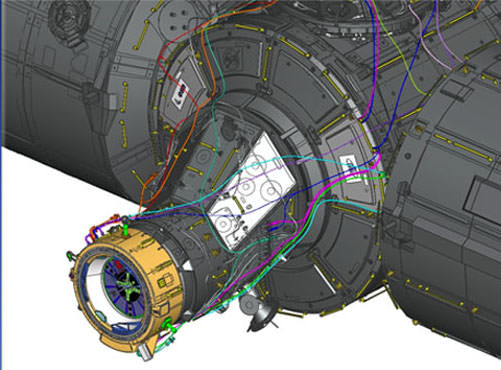
Credits: NASA
